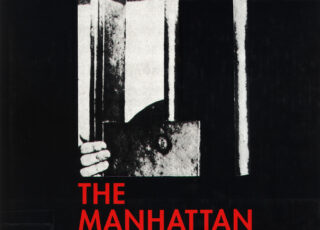Bell, Art History in the Age of Bellori
Giovanni Pietro Bellori was one of the most important intellectuals of seventeenth-century Italy. Although best known today for his art criticism and biographies ...
Continue Reading →Baxandall, Giotto and the Orators
This highly acclaimed volume examines the one firm bridge between the art of the humanists and the painters of the early Italian Renaissance: ...
Continue Reading →Bann, Frankenstein, Creation and Monstrosity
Some of the most significant currents in modern intellectual and cultural history pass by way of Mary Shelley’s Frankenstein (1816). By choosing in ...
Continue Reading →- _English Language
- 17th Century
- Bernini
- Literary Theory
- Literature
- Popes, Vatican, Rome
- Portrait, Sculpture, Materiality
- Rome
Baldinucci, The Life of Bernini
Initially published by Penn State Press in 1965, Catherine Enggass’s translation of Filippo Baldinucci’s Life of Bernini was the first English-language edition of ...
Continue Reading →Bacchi, Pietro and Gian Lorenzo Bernini
Issued in conjunction with a 2016 exhibition of this sculptor rendered by Italian Baroque sculptor Gian Lorenzo Bernini (1598-1680) and his father, Pietro ...
Continue Reading →Bacchi, Bernini and the Birth of Baroque Portrait sculpture
Gian Lorenzo Bernini was the greatest sculptor of the Baroque period, and yet—surprisingly—there has never before been a major exhibition of his sculpture ...
Continue Reading →Grillner, Ramble Linger and Gaze
Ramble, Linger, and Gaze explores a method of architectural research based on narrative dialogue and examines the garden theories and literary garden representations ...
Continue Reading →Cohn, The Pursuit of the Millenium
The end of the millennium has always held the world in fear of earthquakes, plague, and the catastrophic destruction of the world. At ...
Continue Reading →Bann, The Clothing of Clio
Originally published in 1984, The Clothing of Clio is concerned with the wide variety of ways in which the past was represented in ...
Continue Reading →Alder, Engineering the Revolution
Engineering the Revolution documents the forging of a new relationship between technology and politics in Revolutionary France, and the inauguration of a distinctively ...
Continue Reading →Most liked books

Tschumi, The Manhattan Transcripts
May 23, 2025
Tschumi, Red is not a Color
May 23, 2025Recent Comments
Categories
- _English Language 1454
- _French Language 55
- _German Language 69
- _Italian Language 54
- _Latin Language 45
- 1750-1850 64
- 17th Century 77
- 17th culture and other cities in Italy 5
- 19th century 45
- 20th Century 151
- 21th Century 75
- Aesthetics 5
- Afrofuturism 3
- Ancient Literature 37
- Anthropocene 1
- Anthropology 3
- Architectural Theory 228
- Architecture + Philosophy 37
- Architecture and Literature, Symbolism 36
- Art 13
- Art Theory 110
- Artificial Intelligence 11
- Artists in Rome 20
- Astronomy 2
- Autobiography 1
- Bernini 19
- Biology 5
- Catalogue 2
- Christian Iconography 18
- Christianity 13
- Cinema 2
- City 45
- Classical 1
- Construction 1
- Contemporary 2
- Design 29
- Digital Architectonics 26
- Drawings 41
- Economy 31
- Empire, Architecture + Catholicism 14
- England & British Isles 26
- Enlightenment Library 127
- Evolution 6
- Fashion 6
- Feminism 20
- Film Festival 1
- France 47
- Gender and Sexuality Studies 5
- Gothic 13
- Greek, Roman Library 99
- Historiography 43
- Humanism 12
- India 5
- Islam 5
- Italy 80
- Landscape Architecture 8
- LGBT 1
- Libraries 0
- Linguistics 6
- Literary Criticism 11
- Literary Theory 82
- Literature 95
- Low Countries (Benelux) 14
- Mathematics 61
- Medicine 4
- medieval library 38
- medieval literature 12
- Modern 51
- Monuments + Conservation 27
- Music Theory 1
- Mysticism 4
- Mythology 19
- Nature, Ecology, Animals 4
- Neurobiology 1
- Opera 5
- Philosophy 346
- Physics 16
- Poetry 6
- Politics 76
- Popes, Vatican, Rome 27
- Portrait, Sculpture, Materiality 56
- Post-Modern 22
- Programming 2
- Psychology 22
- Religion 23
- Renaissance 86
- Renaissance Library 80
- Rhetorics 1
- Roman Architecture 21
- Rome 122
- Schinkel 8
- Science 57
- Sociology 21
- Sound 7
- Sources 56
- Spain 10
- Switzerland 48
- Uncategorized 73
- Urbanism 53
